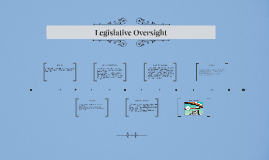

The ICAO Global Aviation Safety Plan (GASP): 2014-2016 called for all States to have implemented effective safety oversight capabilities by the year 2017. CE6 - Licensing, Certification, Authorisation and Approval Obligations.CE5 - Technical Guidance, Tools and Provision of Safety Critical Information.CE4 - Qualified Technical Personnel and Training.CE3 - State Aviation System and Safety Oversight Functions.Audits cover all applicable regulations related to safety oversight by a State, as well as the procedures, the resourcing of functions and other implementing arrangements needed to implement the eight Critical Elements (CE’s) of a State’s Safety Oversight System as defined in ICAO Document 9734-A. In addition, ICAO has established its Universal Safety Oversight Audit Programme, with the aim of verifying, through formal audits, States’ safety oversight arrangements and capabilities. ICAO Doc 9734 Part B - The Establishment and Management of a Regional Safety Oversight System.īoth give comprehensive guidance information to support the development of safety oversight.ICAO Doc 9734 Part A - The Establishment and Management of a State’s Safety Oversight System, and.Accordingly, to support these twin initiatives, ICAO has published: ICAO has responded to the need to formalise arrangements for the establishment of national safety oversight systems, and to supplement these with regional arrangements to derive maximum safety benefit from collective action. The International Civil Aviation Organisation (ICAO) recognises national safety oversight responsibilities within States’ obligations under the Chicago Convention. Generation and maintenance of safety oversight records.Publication of regulatory instructions or advisory material based on findings of oversight activities.Oversight of new or changed systems, operations, products or procedures.Verifying compliance with applicable safety regulatory requirements.Given the main objectives of the safety oversight function, the generic components of a national safety oversight system may be summarised as: This has, in turn, led to the identification of national bodies for safety oversight. Increasingly in European civil aviation, rule preparation and enactment has been passed to European-level bodies such as the European Commission or the European Union Aviation Safety Agency (EASA). For example, and depending on the severity of the case, responsibility for enforcement action (following non-compliance) can be passed to a legal body such as the national department of justice (or similar). Alternatively, the separate functions may be distributed, or may not exist.


Enforcement - taking appropriate action to deal with cases of non-compliance.Īt the national level, these four functions may be exercised by one body, empowered by the national government.Safety Oversight - the monitoring of safe service-provision including verifying compliance with the rules.Rule Enactment - the passing of laws or other appropriate orders to give legal effect to the rules.Rule Preparation - the drafting of national rules, including appropriate consultation.The overall process through which this responsibility is discharged contains four main elements: States bear a responsibility for the regulation of the safety of their national aviation systems and services. Many States and safety experts advocate moving to a form of Safety Oversight referred to as Risk-based Oversight. Unless prescribed otherwise by international legislation, safety oversight in aviation is a national responsibility. Safety Oversight forms the part of the safety regulatory process dedicated to ensuring that applicable safety regulatory requirements are met, and to the monitoring of the safe provision of services. The International Civil Aviation Organisation (ICAO) defines Safety Oversight as a "function performed by a State to ensure that individuals and organizations performing an aviation activity comply with safety-related national laws and regulations." Description


 0 kommentar(er)
0 kommentar(er)
